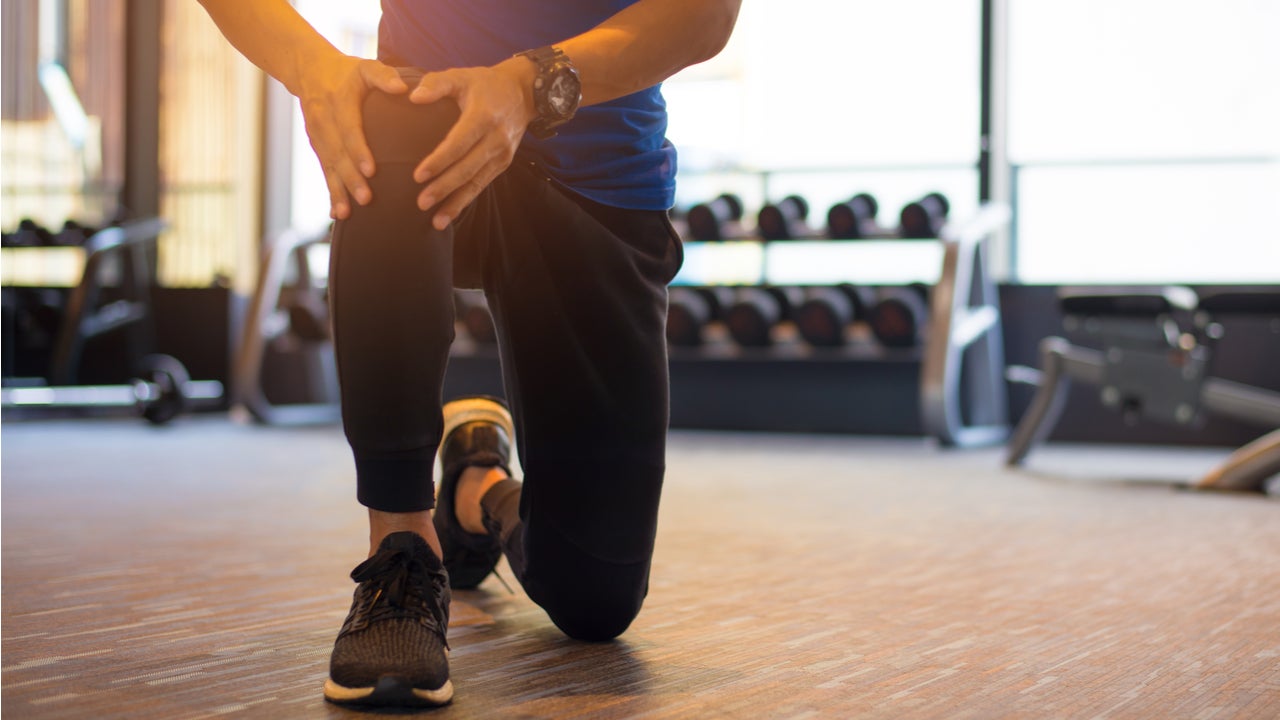Knee replacements leads the top tweeted terms in the trending industry discussions happening on Twitter by key individuals (influencers) as tracked by the platform.
1. Knee Replacement – 143 mentions
Robot-assisted joint replacement surgery, the association between overdose risk score and post-operative complications after total knee arthroscopy, and whether anterior cruciate ligament (ACL) reconstruction leads to total knee replacement were some of the popularly discussed topics in Q3 2021.
How well do you really know your competitors?
Access the most comprehensive Company Profiles on the market, powered by GlobalData. Save hours of research. Gain competitive edge.

Thank you!
Your download email will arrive shortly
Not ready to buy yet? Download a free sample
We are confident about the unique quality of our Company Profiles. However, we want you to make the most beneficial decision for your business, so we offer a free sample that you can download by submitting the below form
By GlobalDataNeil Bradbury, a specialist knee surgeon and orthopaedic consultant, shared an article on robot-assisted joint surgery. The article noted that the ability of robots to enhance the precision of implant positioning is helpful for surgeons and minimises the risks of post-operative complications. The model of the implant is first superimposed on a 3D model of the patient’s joint, which makes it easy for surgeons to assess the risks. The information is then fed into a robot in the operating room, which carries out the procedure with a high level of precision. The use of implants has also evolved through the years, with surgeons preferring implants made of titanium, cobalt chrome, and highly cross-linked polyethylene, the article noted.
In another tweet, David Hunter, an osteoarthritis scientist and clinician, shared a study that assessed the relation between pre-operative overdose risk score and post-operative complications and healthcare use after a total knee arthroscopy. The study analysed 4,326 patients who underwent total knee arthroplasty and had a pre-operative overdose risk score (ORS) of 300 and more. The research found that participants with a higher ORS have higher chances of a lengthy stay at the hospital, re-operation, non-home discharge, and emergency department visits.
Knee replacement was also discussed by Robert LaPrade, a complex knee surgeon and sports medicine specialist, who shared an article on whether ACL reconstruction leads to total knee replacement. The article noted that ACL reconstruction does not lead to total knee replacement, although individuals with a knee injury with loss of the meniscus tissue are at risk of developing osteoarthritis. Furthermore, patients who have undergone ACL reconstructions are 50% more likely to develop arthritis 20 years after the reconstruction.
Interesting article from the @nytimes all about robot-assisted joint surgery:https://t.co/k5Q6sgEykk#neiltheknee #orthopaedics #kneereplacement #mako #stryker #kneepain #kneesurgery pic.twitter.com/TpPP1wPRro
— Neil Bradbury (@neiltheknee) July 21, 2021
2. Tendon – 107 mentions
Choosing between repairing rotator cuff (RC) tendon tears and non-operative treatments, and Achilles tendon tears being one of the most common career-ending injuries for professional athletes were some of the trending discussions in Q3.
Adam Meakins, an extended scope practitioner and sports physiotherapist, shared a study that compared RC repair with conservative non-operative treatment for any type of RC tear. The study analysed results from six randomised controlled trials using Cochrane Risk of Bias 2 tools, and the Grading of Recommendations Assessment, Development and Evaluation (GRADE) system. The analysis found that RC repairs through conservative treatment led to improved functions and pain reduction over a period of six months to two years.
Tendon was also discussed by Lance Silverman, an orthopaedic surgeon and founder of Silverman Ankle & Foot, a medical group specialising in orthopaedic surgery, in an article on how Achilles tendon ruptures lead to lifelong incapacities among professional athletes. Tendon ruptures weaken quickness, jumping, and overall athleticism in athletes despite surgery and rehab. The article detailed review of 15 studies conducted by six orthopaedic researchers that analysed the outcomes of an Achilles tendon injury in professional athletes. The review found that 24% of the time, professional athletes were not able to return to sports after an Achilles tendon tear.
Rotator cuff tendon tears! To repair or not repair, that is the question!
Whether its nobler to stitch the tendons together? Or suffer the stress and strains of rehab? There’s the rub! https://t.co/KNWuUZ0Hi9
— The Sp⚽️rts Physio (@AdamMeakins) July 21, 2021
3. Meniscus repair knee arthritis – 102 mentions
High tibial osteotomy (HTO) for treating knee arthritis pain in active people, and meniscus repair rehabilitation were among the widely discussed topics on meniscus in the third quarter.
Howard Luks, an orthopaedic surgeon, shared an article on the HTO procedure for managing knee arthritis pain in active people. Luks believes that the procedure helps in treating swelling and pain arising from knee osteoarthritis, improves function, and on most occasions delays the requirement for a complete knee replacement surgery. The procedure is generally recommended for runners, athletes, hikers, cyclists, and triathletes who want to return to high levels of exercises, such as running or cycling, the article noted.
Another discussion on meniscus was shared by Mike Reinold, founder and president of the Champion Physical Therapy and Performance, a physical therapy facility, on a study that backed weight-bearing and range of motion in rehabilitation protocols for patients who have undergone meniscus repair surgery. There are many contradictions in the rehabilitation of patients undergoing these surgeries especially in areas of range of motion and weightbearing. Researchers concluded that rehabilitation should include immobilisation in full extension for four to six weeks, but weightbearing for longitudinal repairs should be allowed immediately. Furthermore, weightbearing could be restricted partially in case of complex repairs, the article noted.
This has been the summer of HTOs/DFOs … most indicated after arthroscopy/meniscus-related arthritis set in. While HTOs can get most runners back to running… avoiding OA after artx is a better strategy. https://t.co/d3UJlhFfua
— Howard Luks MD (@hjluks) August 6, 2021
4. Arthroplasty – 83 mentions
An increase in the incidence of revision shoulder arthroplasty, and comparison of complications after total joint arthroplasty in patients with achondroplasia and without achondroplasia were widely discussed topics in the previous quarter.
Dr. J. Sanchez-Sotelo, an orthopaedic surgeon, shared a study on the rising incidence of shoulder arthroplasty in the US and the increasing burden of revision shoulder arthroplasty, which rose by 392% between 2002 and 2017. The study found that 258 out of 100,000 individuals are living with a replaced shoulder in the US, a trend that is likely to continue leading to an increase in the prevalence of shoulder arthroplasty. The study elaborated that the increasing prevalence of shoulder arthroplasty and the resultant good outcomes indicate the public health benefits rendered by the procedure.
Arthroplasty was also discussed by Lee E. Rubin, chief of the Total Joint Replacement Program at Yale University in the US, who shared a study that compared total joint arthroplasty in patients with achondroplasia and those without achondroplasia. Achondroplasia is one of the most common types of skeletal dysplasia that prevents cartilages from modifying into bones, leading to conditions such as dwarfism.
Researchers believe that the complete joint arthroplasty of the knee or hip could present different challenges for this group of people. The study found the five-year survival rate for patients suffering with achondroplasia and those without achondroplasia who underwent either total hip or knee arthroplasty to be the same. The results also supported the long-term success of implants in both types of patients.
258/100,000 US individuals live with a replaced shoulder. Revision shoulder arthroplasty increased by 392% between 2002 and 2017! Great data by @EricWagnerMD and his #shoulder team @jbjs https://t.co/oj2yMPZ5Rs open access too! pic.twitter.com/CekABaC3z1
— Dr.J.Sanchez-Sotelo (@JSanchezSotelo) July 20, 2021
5. Ligament – 83 mentions
The diagnosis of multi-ligament knee injuries, and rehabilitation programme for multi-ligament reconstruction, were some of the popular discussions around ligaments in Q3.
Dr. Jeff Padalecki, an orthopaedic surgeon and complex knee injury specialist, shared an article on the diagnosis of multi-ligament knee injuries. Knee injuries can impact multiple ligaments at the same time, especially when hit directly in a sport or falling from a height, the article detailed. Knee dislocation is an immediate outcome of most of these events, which leads to further damage of the nerves and arteries of the leg and requires immediate attention.
Multi-ligament injuries lead to typical outcomes such as pain and swelling, instability, and complete inability to walk or stand. An orthopaedic surgeon first applies traction to the leg to lend support to the dislocated knee, and then performs a magnetic resonance imaging (MRI), to determine the extent of the damage to the knee and ligaments, the article detailed.
Ligament was also mentioned in an article Robert LaPrade shared on the rehabilitation programme needed for multi-ligament reconstruction. LaPrade stated that a complex knee injury is caused when more than one ligament is damaged, leaving the knee dislocated and imbalanced. The prime focus of a multi-ligament rehabilitation programme should be to ensure that the knee does not become stiff due to immobilisation, the skin grafts do not stretch, and patients regain their overall strength of the lower limb, the article highlighted.
https://twitter.com/DrJeffPadalecki/status/1433087145900711939










Related Company Profiles
Yale University
O-A, INC.
ACL Pty Ltd